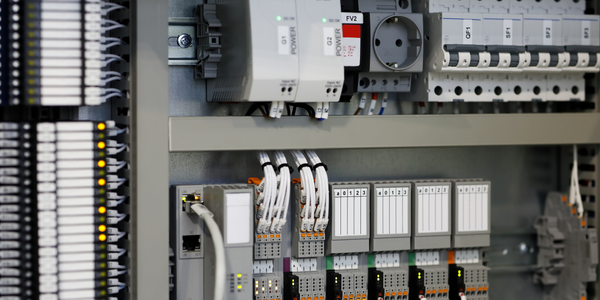Customer Company Size
Large Corporate
Region
- Pacific
Country
- Australia
Product
- Nutanix NX-2000 Complete Cluster
- VMware View
- Fusion-io solid-state drives
Tech Stack
- Converged Storage and Compute Platform
- Automated Data Tiering
Implementation Scale
- Enterprise-wide Deployment
Impact Metrics
- Customer Satisfaction
- Cost Savings
- Productivity Improvements
Technology Category
- Infrastructure as a Service (IaaS) - Cloud Computing
- Infrastructure as a Service (IaaS) - Cloud Storage Services
Applicable Industries
- Retail
Applicable Functions
- Business Operation
Use Cases
- Remote Asset Management
- Retail Store Automation
Services
- System Integration
About The Customer
Sanity Music is one of Australia's largest entertainment retailers, specializing in movies, TV, music, Blu-ray, and merchandise. Established in 1992, the company operates 160 stores across the country, offering a wide range of specialty music and video products. Sanity Music is committed to providing excellent customer service and ensuring a superior shopping experience. The company values customer satisfaction as a key aspect of its revenue model and continuously seeks innovative solutions to enhance its service offerings.
The Challenge
Sanity Music, a leading Australian retailer with 160 stores, faced challenges with slow internet speeds at some regional stores, impacting customer satisfaction. Customers often had to wait several minutes for search results, which was unacceptable for the company. Upgrading bandwidth was not a preferred option due to high costs. The IT department was tasked with finding a solution to improve search performance without significantly increasing operational costs.
The Solution
Sanity Music implemented a Virtual Desktop Infrastructure (VDI) solution using Nutanix NX-2000 Complete Cluster to address the performance issues. The Nutanix platform, known for its high-performance server and storage infrastructure, was chosen for its compact footprint and fast implementation capabilities. The solution included 350 virtual desktops running VMware View, significantly improving internet search speeds and customer satisfaction. The Nutanix system was set up rapidly, just in time for the holiday shopping season, and provided a more power-efficient and space-saving alternative to traditional servers and SAN.
Operational Impact
Quantitative Benefit

Case Study missing?
Start adding your own!
Register with your work email and create a new case study profile for your business.
Related Case Studies.

Case Study
Improving Production Line Efficiency with Ethernet Micro RTU Controller
Moxa was asked to provide a connectivity solution for one of the world's leading cosmetics companies. This multinational corporation, with retail presence in 130 countries, 23 global braches, and over 66,000 employees, sought to improve the efficiency of their production process by migrating from manual monitoring to an automatic productivity monitoring system. The production line was being monitored by ABB Real-TPI, a factory information system that offers data collection and analysis to improve plant efficiency. Due to software limitations, the customer needed an OPC server and a corresponding I/O solution to collect data from additional sensor devices for the Real-TPI system. The goal is to enable the factory information system to more thoroughly collect data from every corner of the production line. This will improve its ability to measure Overall Equipment Effectiveness (OEE) and translate into increased production efficiencies. System Requirements • Instant status updates while still consuming minimal bandwidth to relieve strain on limited factory networks • Interoperable with ABB Real-TPI • Small form factor appropriate for deployment where space is scarce • Remote software management and configuration to simplify operations

Case Study
Digital Retail Security Solutions
Sennco wanted to help its retail customers increase sales and profits by developing an innovative alarm system as opposed to conventional connected alarms that are permanently tethered to display products. These traditional security systems were cumbersome and intrusive to the customer shopping experience. Additionally, they provided no useful data or analytics.

Case Study
How Sirqul’s IoT Platform is Crafting Carrefour’s New In-Store Experiences
Carrefour Taiwan’s goal is to be completely digital by end of 2018. Out-dated manual methods for analysis and assumptions limited Carrefour’s ability to change the customer experience and were void of real-time decision-making capabilities. Rather than relying solely on sales data, assumptions, and disparate systems, Carrefour Taiwan’s CEO led an initiative to find a connected IoT solution that could give the team the ability to make real-time changes and more informed decisions. Prior to implementing, Carrefour struggled to address their conversion rates and did not have the proper insights into the customer decision-making process nor how to make an immediate impact without losing customer confidence.

Case Study
Ensures Cold Milk in Your Supermarket
As of 2014, AK-Centralen has over 1,500 Danish supermarkets equipped, and utilizes 16 operators, and is open 24 hours a day, 365 days a year. AK-Centralen needed the ability to monitor the cooling alarms from around the country, 24 hours a day, 365 days a year. Each and every time the door to a milk cooler or a freezer does not close properly, an alarm goes off on a computer screen in a control building in southwestern Odense. This type of alarm will go off approximately 140,000 times per year, equating to roughly 400 alarms in a 24-hour period. Should an alarm go off, then there is only a limited amount of time to act before dairy products or frozen pizza must be disposed of, and this type of waste can quickly start to cost a supermarket a great deal of money.

Case Study
Supermarket Energy Savings
The client had previously deployed a one-meter-per-store monitoring program. Given the manner in which energy consumption changes with external temperature, hour of the day, day of week and month of year, a single meter solution lacked the ability to detect the difference between a true problem and a changing store environment. Most importantly, a single meter solution could never identify root cause of energy consumption changes. This approach never reduced the number of truck-rolls or man-hours required to find and resolve issues.








